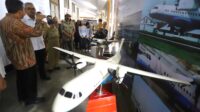Throughout human history, innovation has served as the driving force behind societal development, transforming daily life and laying the foundation for modern technology. Innovation encompasses the creation, improvement, or application of ideas that solve problems or enhance human experiences. From the earliest stone tools to complex engineering feats, ancient discoveries continue to influence contemporary advancements in ways often unnoticed by the casual observer.
Table of Contents
- Historical Foundations of Everyday Technologies
- Case Study: The Legacy of Egyptian Innovations
- The Role of Longevity and Leadership in Innovation
- The Evolution of Light and Energy Use: From Sunlight to Modern Technologies
- Non-Obvious Aspects of Ancient Innovation: Cultural and Societal Shifts
- Bridging Ancient and Modern: Lessons Learned and Future Directions
- Conclusion
Historical Foundations of Everyday Technologies
Many modern tools and devices trace their origins back to innovations from ancient civilizations. Early inventions such as the wheel, simple pulleys, and basic metallurgy enabled humans to manipulate their environment more effectively. For example, the invention of the wheel in Mesopotamia around 3500 BCE revolutionized transportation and trade, laying the groundwork for complex machinery and vehicles today. Similarly, the development of early plumbing systems by the Indus Valley Civilization showcased sophisticated engineering that influences today’s urban infrastructure.
Persistent innovation across civilizations highlights a universal human trait: the desire to improve living conditions. These ancient solutions often served as prototypes, refined over centuries to become the sophisticated technologies we rely on today. Connecting ancient ingenuity to contemporary advancements demonstrates a continuous thread of human creativity and problem-solving.
Case Study: The Legacy of Egyptian Innovations
Medical Practices: Using Mouldy Bread as an Early Antibiotic
Ancient Egyptians developed remarkably advanced medical techniques, some of which prefigured modern antibiotics. Evidence suggests they used mouldy bread to treat infections—an early form of antimicrobial therapy. This practice, documented in medical papyri, reflects a sophisticated understanding of natural remedies and the importance of microbial control, principles that underpin today’s antibiotic use.
Comfort and Health: Egyptian Stone Pillows and Their Influence on Sleep Ergonomics
Egyptian craftsmen created stone pillows around 2000 BCE, thought to promote better sleep and prevent facial wrinkles. These ergonomic designs influenced modern sleep research, which emphasizes neck support and spinal alignment. Today, the principles behind Egyptian sleep aids are reflected in contemporary pillows designed for comfort and health, illustrating how ancient ideas can inform modern ergonomic innovations.
Architectural and Engineering Feats
Egyptians pioneered construction techniques, developing the use of large stone blocks, precise calculations, and durable materials for monumental architecture like pyramids and temples. Their engineering principles, such as the use of inclined planes and lifting devices, continue to influence modern architectural design and construction methods, emphasizing stability and longevity.
The Role of Longevity and Leadership in Innovation
A notable example of sustained leadership fostering innovation is Pharaoh Pepi II of Egypt, who reigned for an unprecedented 94 years. His long tenure allowed for continuous development in administration, architecture, and cultural practices. Such extended governance provided stability and a fertile environment for cumulative progress, a principle echoed in modern scientific and technological leadership where long-term vision is crucial for breakthrough innovations.
Modern institutions and research organizations often emphasize sustained investment and leadership to achieve significant technological advancements, underscoring the timeless value of long-term commitment in innovation cycles.
The Evolution of Light and Energy Use: From Sunlight to Modern Technologies
Ancient Methods of Harnessing and Understanding Sunlight
Ancient civilizations, including the Egyptians, monitored and utilized sunlight for various purposes—agriculture, religious rituals, and daily activities. They constructed structures aligned with celestial events to optimize sunlight exposure, demonstrating an early understanding of solar patterns. Such knowledge laid the groundwork for modern solar technologies.
The Sunlight Princess as a Modern Symbol of Solar Innovation
The contemporary project Number multipliers up to 15x exemplifies how modern design draws inspiration from timeless principles—harnessing solar energy efficiently and aesthetically. Named metaphorically after the ancient Egyptian “Sunlight Princess,” this initiative symbolizes the ongoing pursuit of sustainable energy solutions rooted in historical understanding of sunlight’s power.
Transition from Natural to Artificial Light and Its Societal Impacts
The shift from reliance on natural sunlight to artificial lighting—beginning with oil lamps and progressing to electricity—transformed societies. It extended productive hours, improved safety, and enabled new industries. This evolution reflects an ongoing dialogue between ancient practices and modern innovation, emphasizing the importance of understanding and harnessing energy sources for societal advancement.
Non-Obvious Aspects of Ancient Innovation: Cultural and Societal Shifts
Innovations in ancient times often had profound effects beyond their immediate practical use. For example, the development of writing systems in Mesopotamia and Egypt shaped social hierarchies, enabling record-keeping, legal systems, and cultural transmission. These technological shifts influenced daily routines, education, and societal organization—hidden drivers that continue to influence modern cultural norms and institutions.
Furthermore, the transmission of knowledge across civilizations—through trade, conquest, or migration—facilitated a cumulative cultural evolution. Recognizing these interconnected influences highlights the importance of preserving ancient innovations, as they serve as foundations for contemporary societal structures.
Bridging Ancient and Modern: Lessons Learned and Future Directions
Studying ancient innovations underscores the importance of preservation and continued research. Ancient principles often inspire modern technological breakthroughs, such as biomimicry, where nature-inspired designs solve contemporary problems. For instance, understanding Egyptian engineering can inform sustainable construction, while ancient solar practices guide current renewable energy initiatives.
In the face of global challenges like climate change and resource depletion, ancient wisdom offers valuable insights. Integrating historical knowledge with cutting-edge technology enhances our capacity to develop innovative solutions, ensuring a sustainable future rooted in human ingenuity.
Recognizing the Enduring Legacy of Ancient Innovations
“Human progress is a continuous journey, built upon the innovations of our ancestors. Appreciating this legacy not only deepens our understanding but also inspires future breakthroughs.”
From the earliest tools to the latest solar technologies, ancient innovations form the backbone of modern life. Recognizing these connections encourages us to preserve, study, and draw inspiration from our shared human heritage—fueling the ongoing journey of ingenuity and discovery.




















